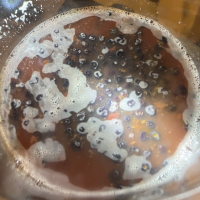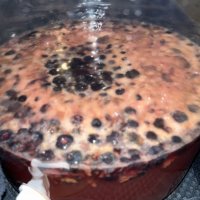BeginnerCider
Member
So I tried making cider for the first time yesterday and I think I made a mistake because I can't see any bubbles in the airlock or in the fermentation vessel. Some background is that I wanted to try making a simple test cider before buying 5 gallons of apple juice and going all in. I got a 7 gallon FerMonster and a bung with an airlock. Here are the ingredients I used:
- 2.5 ml of C-1118 yeast
- 2 Gallons of Tropicana 100% Fresh Pressed Apple Juice
- 3 Packs of Tetley Orange Pekoe
- Pack of Frozen Blueberries



















![Craft A Brew - Safale BE-256 Yeast - Fermentis - Belgian Ale Dry Yeast - For Belgian & Strong Ales - Ingredients for Home Brewing - Beer Making Supplies - [3 Pack]](https://m.media-amazon.com/images/I/51bcKEwQmWL._SL500_.jpg)









































